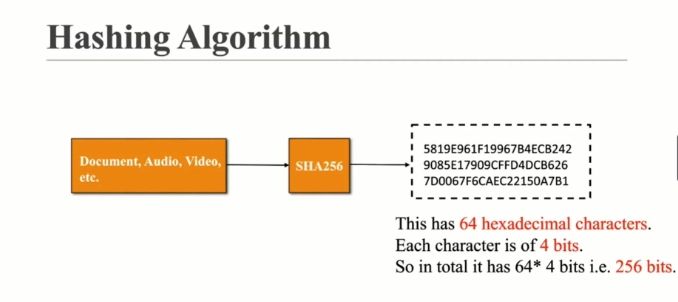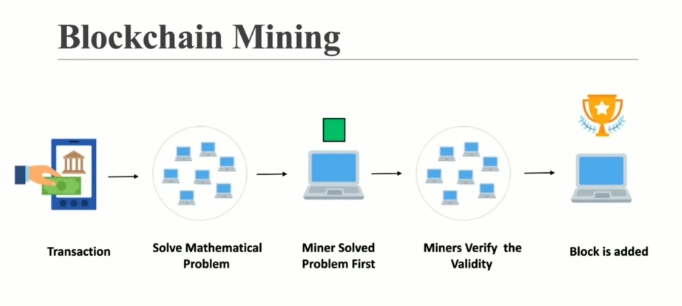A Beginner's Guide to Blockchain: Why, What, and How?

When I first started learning about blockchain and Web3, I had tons of questions—Why is this important? What even is a blockchain? How does it work? But finding beginner-friendly content that explained these things clearly was tough.
So I decided to write this article for anyone who’s curious and wants to understand the fundamentals of blockchain in a simple way—before diving deep into coding, smart contracts, or crypto.
1. Why Should I Study Blockchain?
Blockchain isn’t just about cryptocurrencies. It’s about trust, transparency, and decentralization. It’s being adopted in industries like finance, healthcare, supply chain, real estate, and more.
Here’s why learning blockchain matters:
- It’s a fast-growing field with huge career opportunities
- It encourages understanding of distributed systems
- It challenges the way we think about trust, ownership, and digital identity
2. What is Blockchain?
The concept of blockchain was first proposed in a 1991 research paper by Stuart Haber and W. Scott Stornetta, which aimed to solve the problem of digitally timestamping documents so they couldn’t be backdated or tampered with.
In simple terms:
Blockchain is a distributed, immutable ledger that stores data in blocks and links them using cryptography. It’s designed to be secure, transparent, and resistant to modification.
3. Applications of Blockchain
Blockchain has real-world use cases beyond Bitcoin or Ethereum:
- Finance: Decentralized Finance (DeFi), cross-border payments
- Healthcare: Secure medical records
- Supply Chain: Transparent product tracking
- Voting Systems: Tamper-proof digital voting
- Digital Identity: Verifiable credentials without central authority
4. Hashing Algorithm
Hashing is the backbone of blockchain security.
- A hash is a unique fixed-size string output for any input data.
- Even a tiny change in input gives a completely different hash.
- It’s used to connect blocks together securely.
5. Immutable Ledger
Once data is recorded on the blockchain, it cannot be changed.
If a hacker tries to change data in a block:
- The hash of that block changes
- This breaks the link with the next block
- The entire chain after that becomes invalid
This property makes blockchain tamper-proof.
6. Centralized Network vs Distributed P2P Network
In traditional systems:
- A central authority controls everything (single point of failure)
In blockchain:
- It’s a peer-to-peer (P2P) network where every node has a copy of the ledger
- There’s no single point of control, and data recovery is easier in case of an attack
7. Distributed Peer-to-Peer Network
The more nodes (computers) in the blockchain, the harder it is to attack.
- If one node is hacked, the rest reject its data
- The network validates and maintains consistency
- This makes blockchain highly secure and resilient
8. Blockchain Mining
Mining is the process of:
- Validating transactions
- Solving complex mathematical problems
- Adding new blocks to the blockchain
Miners are rewarded for their work, which keeps the network running.
9. Byzantine Generals Problem
This is a famous problem in distributed computing:
How can multiple parties agree on a decision, even if some of them are unreliable?
Blockchain solves this using Byzantine Fault Tolerance (BFT), which ensures:
- The majority honest nodes reach consensus
- The system can tolerate some faulty/malicious nodes
10. Consensus Protocol

- Miners are incentivized to behave honestly
- If they try to cheat, they lose time, money, and effort
- This keeps the network secure

- Proof of Work (PoW): Solve puzzles (Bitcoin uses this)
- Proof of Stake (PoS): Stake your coins to validate transactions
- Others: Delegated PoS, Proof of Authority, etc.
When a miner proposes a new block:
- All nodes verify it using the consensus protocol
- Only valid blocks are added to the chain

Sometimes, two miners create a new block at the same time. This results in a temporary fork in the chain.
To solve this:
The longest chain wins—the one with more proof of work or stake.
Eventually, one chain becomes longer and is accepted by the network. The other is discarded.

Blockchain may seem complex at first, but once you understand the core concepts like hashing, immutability, P2P networks, consensus, and distributed trust, everything starts to click.
If you’re curious, just dive in. This is just the beginning—there’s so much more to explore in Web3, smart contracts, NFTs, and beyond.











